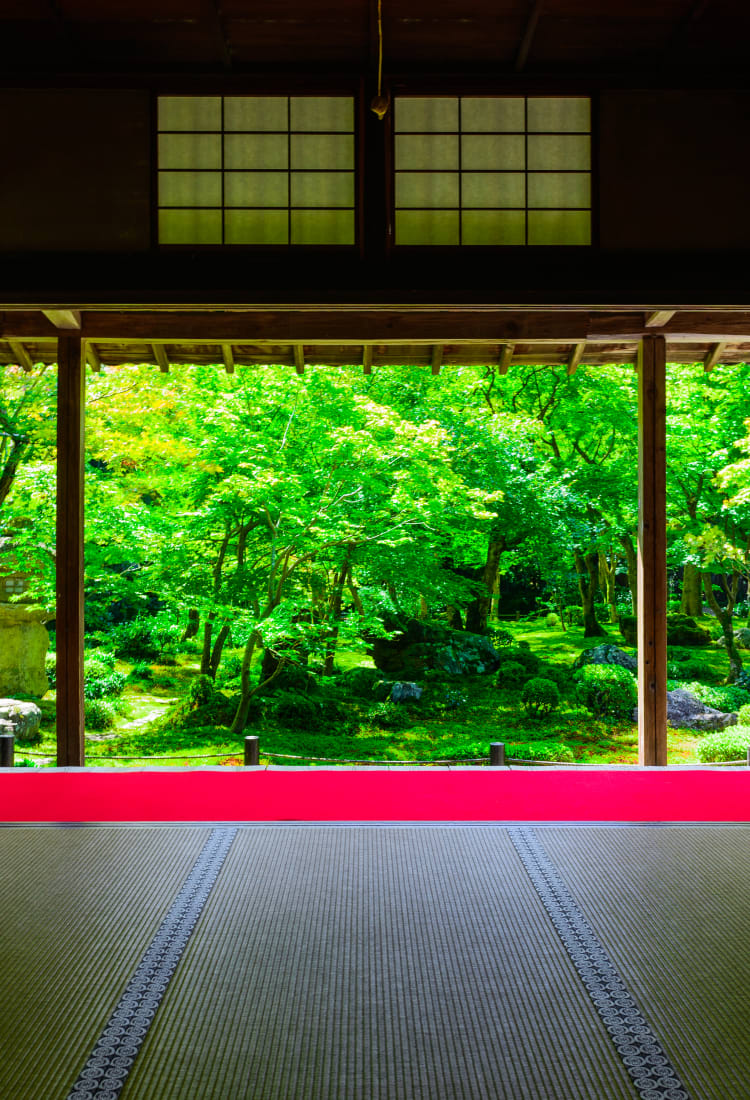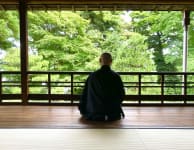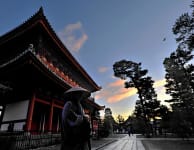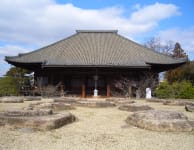Japanese meditation is known the world over for its spiritual, physical and mental health benefits
Its roots trace back to the origins of Zen Buddhism, a religion that offers a path to enlightenment through meditation. Studies show that practicing Zen meditation helps cope with anxiety and stress, among other health benefits. In a fast-paced country like Japan, meditation is a superb way to slow down and experience peace of mind. Zen meditation is not just for Japanese locals. These days, visitors to Japan can take part in the centuries-old tradition of Zen at retreats and Buddhist temples across the nation.
History of Japanese Buddhism
Buddhism arrived in Japan sometime in the 6th century through China and Korea along the Silk Road, an ancient network of trade routes. Shinto, an indigenous faith of Japan, predates the arrival of Buddhism, and is said to have evolved from ancient nature-worshiping religions. Buddhism helped shape and evolve Shinto, though most Japanese would be hard-pressed to call themselves devotees of either faith, and visit both Buddhist temples and Shinto shrines.
Zen is a well known school of Buddhism in Japan, and aspects of Japanese culture are either greatly influenced by, or direct expressions of Zen. Japanese Gardens, tea ceremonies , and even martial arts can trace their roots back to Zen.
Zen Buddhism is the practice of meditation to reach self-realization and enlightenment. Those who practice Zen don't rely on powerful deities, but instead are guided by their teacher along their spiritual journey.

A tranquil spot is the best place for meditation
How to Meditate
Meditation has many health benefits. Studies show it helps cope with depression and anxiety, reduce stress, improve sleep, and in some cases, even treat chronic pain. If you're interested in learning about Zen Buddhism and how to meditate, zazen, a famous Japanese meditation technique, is a great place to start. Its focus is on deep thought and contemplation, and it serves as the foundation of Zen meditation.
Zazen technique involves a sitting posture in a quiet, tidy place. Sitting either on your knees or in lotus or half-lotus position, straighten your spine, pull in your chin, and extend your neck as if you're reaching for the ceiling. When practicing zazen, allow your breath to flow quietly and naturally without trying to control it. As thoughts arise, let them come and go without judgement, neither pursuing nor trying to escape them.
Experience Japanese Meditation
In Japan, people often practice sesshin, group meditation that takes place in temples or centers. If you are looking for a quintessentially Zen experience, look no further.
Visitors the world over travel to Japan to study meditation at Buddhist temples. In a typical zazen session, you'll learn the basics of meditation and how to incorporate zen into your daily life. You're then guided through the practice of Zazen in the tranquility of a temple setting. Classes are generally followed by a tour of the grounds or the chance to participate in other Zen practice.
Kyoto, Nara and Kamakura are famous for their Zen temples, plenty of which offer meditation lessons. Lesser-known areas such as Sendai and Otsuki offer these classes as well. Reservations are usually needed to join a zazen lesson, and English sessions are available in many places around Japan (though it certainly varies from temple to temple). Some locations offer daily practice while others have only one lesson per week, so it's best to do some research and plan before you go. Nearly all Zen temple grounds feature gardens that you can explore either before or after your session to help with meditation and focus.


Zen gardens are designed to assist with meditation
Zen Gardens
Buddhist monks created Zen gardens to help calm the mind and assist with meditation. Zen gardens, or Japanese rock gardens, are typically made of gravel, sand, moss, pruned trees and bushes, and an intentional, extremely conscientious placement of rocks and stones. To create a Zen garden, sand and gravel are carefully raked into spiral or rippled patterns, usually to represent water, and various rocks and stones are used to symbolize elements such as trees or fire. The smooth pebbles used have been worn down by nature rather than the hand of a person. Zen gardens imitate the essence of nature rather than the actual use or appearance of it. The result is a soothing, tranquil spot that encourages introspection and meditation.
Zen gardens are often small, and are meant to be seen from a single point of view outside the garden itself. Some of Japan's most famous Zen gardens include Komyoji in Kamakura and Ryoanji in Kyoto. A UNESCO World Heritage Site, the Ryoanji grounds were originally the estate of a wealthy aristocrat before they were converted to a Zen temple in 1450. The origin of the famous gardens, however, as well as their true meaning, remains a mystery.


Temple activities also include caligraphy and tea ceremonies
Other Temple Experiences
Besides meditation classes and viewing Zen gardens, there are other temple experiences available to curious visitors. All around the country, you can take part in tea ceremony, sutra copying, or shukubo—an overnight temple stay.
Tea culture is synonymous with Zen Buddhism in Japan. It was created in the Zen environment, and the tea ceremony has been greatly shaped by Zen Buddhism. Some temples offer a tea ceremony class, in which visitors learn the history and philosophy of the tradition before watching a tea ceremony performed by the instructor, then finally brew and serve their own tea.
Shakyo calligraphy is the art of drawing Buddhist sutras by hand. While it is exquisitely beautiful, the method requires more than just an eye for art. Each stroke insists on your avid attention, making shakyo a practice in mindfulness and discipline. Many temples offer shakyo classes for those interested.
Finally, some Zen temples have guesthouse areas called Shukubo, where you can actually spend the night in a temple. Historically, only monks and pilgrims were permitted to do this, but thanks to growing interest in Zen Buddhism, more and more locations are opening their doors to foreign guests overnight.
The latest information may differ, so please check the official website
* The information on this page may be subject to change due to COVID-19.





































































